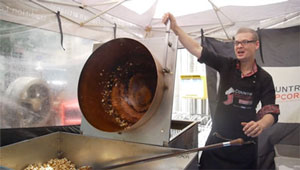
In that fraction of a second which is your shutter speed, all the colors, lights, their absences and the shadows in between them are snapped and stored as a still.
However, true experiences do not happen in a fraction of a second, and neither do they engage exclusively the sense of sight.
All five senses come into play in an instant, and the photographer is at the center of that moment.
Not so for the viewer — for all he sees in the photograph is simply what he sees — a moment, frozen.
The photo essay is a staple in journalism. What of the sound essay?
In fact, audio at times can be the only thing that gives power to a photographer’s image.
Some of the most iconic images in contemporary journalism are best remembered for the sounds they conjure.

In major newsrooms audio is still second-class citizen, used only when it makes sense and adds to the narrative. While video has asserted its place in online journalism, it is time for sound to take the stage.
The idea of sound as a storytelling device is still nascent, but the Web now offers a whole new digital palette for the documentary artist.
There cannot be a more exciting time for the factual storyteller to fashion his craft — weaving sight, sounds and motion in space and time to record and recreate experiences in true multimedia.
Since print, we have become so conditioned to using the sense of sight to convey messages. Newspapers, magazines, paintings, postcards, posters, banners, flags, graffiti, you name it.
We are all familiar with slideshows and how the right music evokes a connection with the images. What if we swap the roles and use sound as another sensory level to tell stories?
We have increasingly become a society addicted to visuals and imagery. Take a step into the shoes of the blind and see what they hear. Ours is an era of visual promiscuity where images assail us on the street and screen.
Now thanks to Photoshop, we are blasé to images. Thanks to YouTube, video mashup is the new normal. While we are numb to visuals, audio can add an emotional dimension.
What can the silent movies teach us?
It is time to add and explore a different medium to tell our stories. Let us use sound as another medium of storytelling, with visuals to accompany it.
Sound can be as effective or even more so than visuals in evoking experiences and stirring emotions.
Rather than using videos, let the sound take you on a ride while the stills set the scene.


